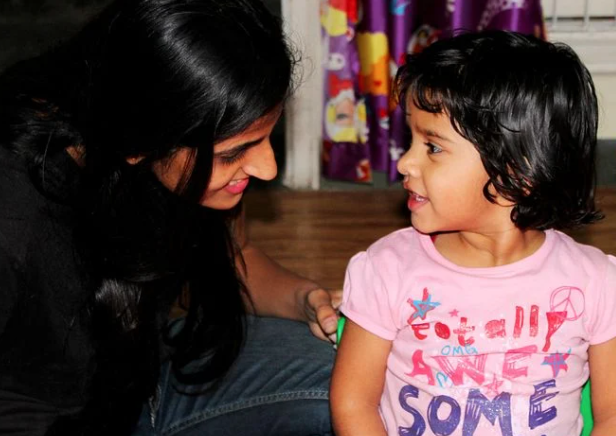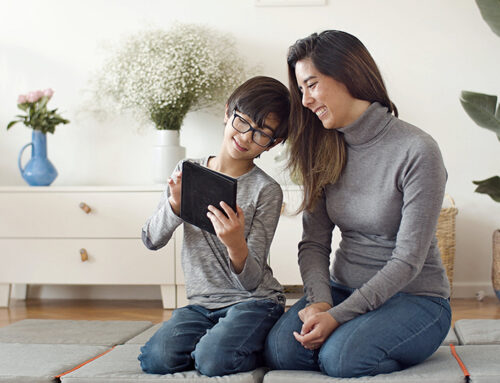Talking to your child is an essential factor in their language development. However, just exposing your child to language is not all that matters. If that were true, you could plop your kid in front of the TV for hours and hours and they would develop language. If only it were that easy. True face-to-face communication and interaction are necessary for language acquisition- but does it matter what you say? Yes! This blog is all about why it is important to talk to your child with hearing loss.
Studies show that the way you communicate with your child, in terms of quality and quantity, has the strongest effects on children who are at risk for language delays, such as children with hearing loss. A study by Nittrouer et al. looked at parent language input styles and their effect on children with varying levels of hearing loss.
The Results
- Children with moderate hearing loss using hearing aids were most affected by the overall amount of parental language input.
- The more the better! The more children with moderate hearing loss hear their parents talk, the better.
- Children with severe/profound hearing loss using cochlear implants, who are most at risk for language delay, were most influenced by the quality of parental language input.
- Verbal responsiveness, as well as the use of recasts, extensions, and open-ended questions were shown to have a positive impact on language development.

What Does This Mean? What Do I Do?
- Verbal responsiveness: Respond to all communication or communication efforts made by your child!
- Encourage your child to talk more: always respond to your child’s communication and provide a response that continues the conversation whenever possible.
- For children with limited verbal output: treat verbalizations and gestures as communication efforts and respond! For example, if your points to a ball and verbalizes “bah,” you can respond by saying, “You’re right! I see a ball!”
- Recasts: Respond to your child’s utterance by restating it in a more mature, grammatical way. For example, Child: “Dog walk” You: “The dog is walking!”
- Extensions: Respond to your child’s utterance by restating it in a more mature, grammatical way while also adding new information. For example, Child: “Boy cry You: “The boy is crying. He is sad.”
- Open-ended questions: Ask your child questions that encourage the use of language.
- Avoid yes/no questions. These questions tend to end the conversation quickly and require only a single-word response.
Use Your Child’s Speech Pathologist
First off, it must be acknowledged that shaping and changing the way you communicate with your child is not easy and does not happen overnight. It is something that even your child’s speech pathologist had to practice for years! But these therapists are a great resource- use them! Observing your child’s speech therapy sessions is a great way to become more familiar with these language strategies. Let’s work together to build these skills that will maximize your child’s language development.
Resources
Nittrouer, S., Lowenstein, J. H., & Antonelli, J. (2019). Parental Language Input to Children With Hearing Loss: Does It Matter in the End? Journal of Speech, Language, and Hearing Research, 63(1), 234–258. doi: 10.1044/2019_jslhr-19-00123

Blue Bird Day fosters socialization, sensory regulation, and pre-academic learning in children ages 2-7 years in therapeutic rotations that simulate preschool and kindergarten settings. Our compassionate therapists practice a relationship-based and family-centered approach, provide parent training, and collaborate on goals and individualized intensive treatment plans for your child.
We believe in a collaborative and multi-disciplinary team approach to therapy. A team of occupational therapists, speech-language pathologists, dietitians, developmental therapists, behavioral therapists, physical therapists, and therapeutic assistants are created for each child to ensure child and family are fully supported and the best possible results are achieved.
Options for individualized, group and virtual therapy sessions are available as well.
Want to learn more or you have a specific question? Feel free to connect with us here!



